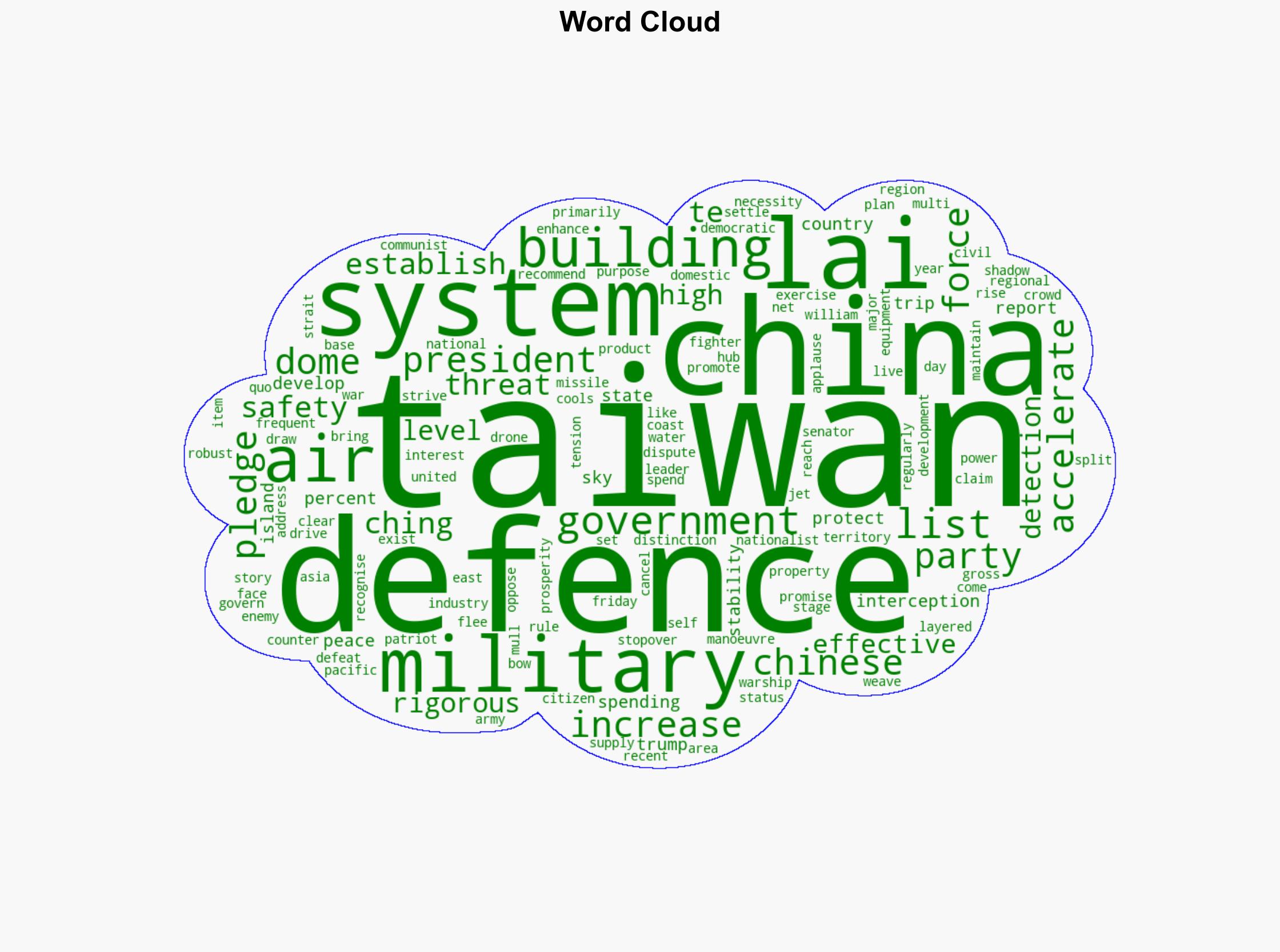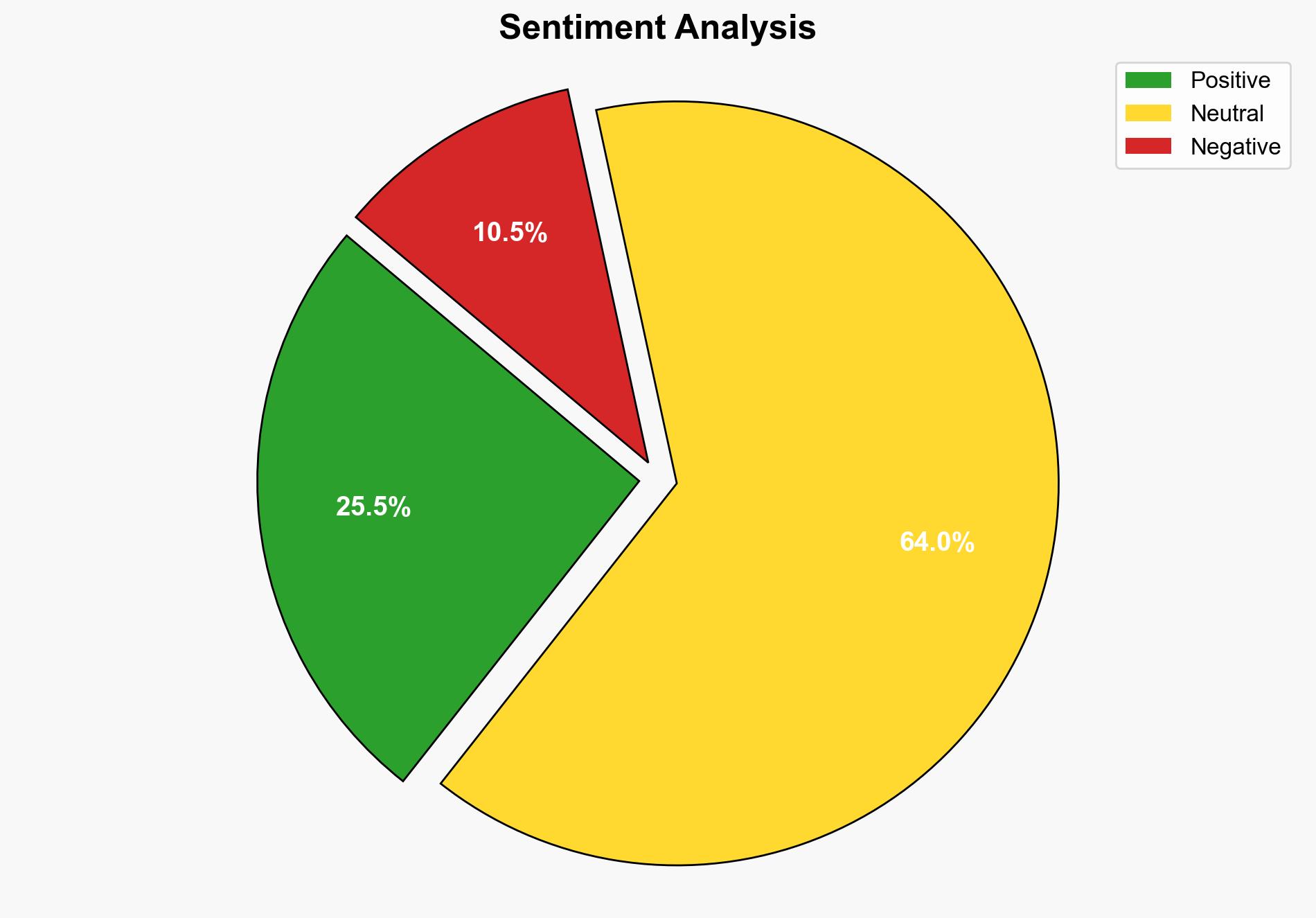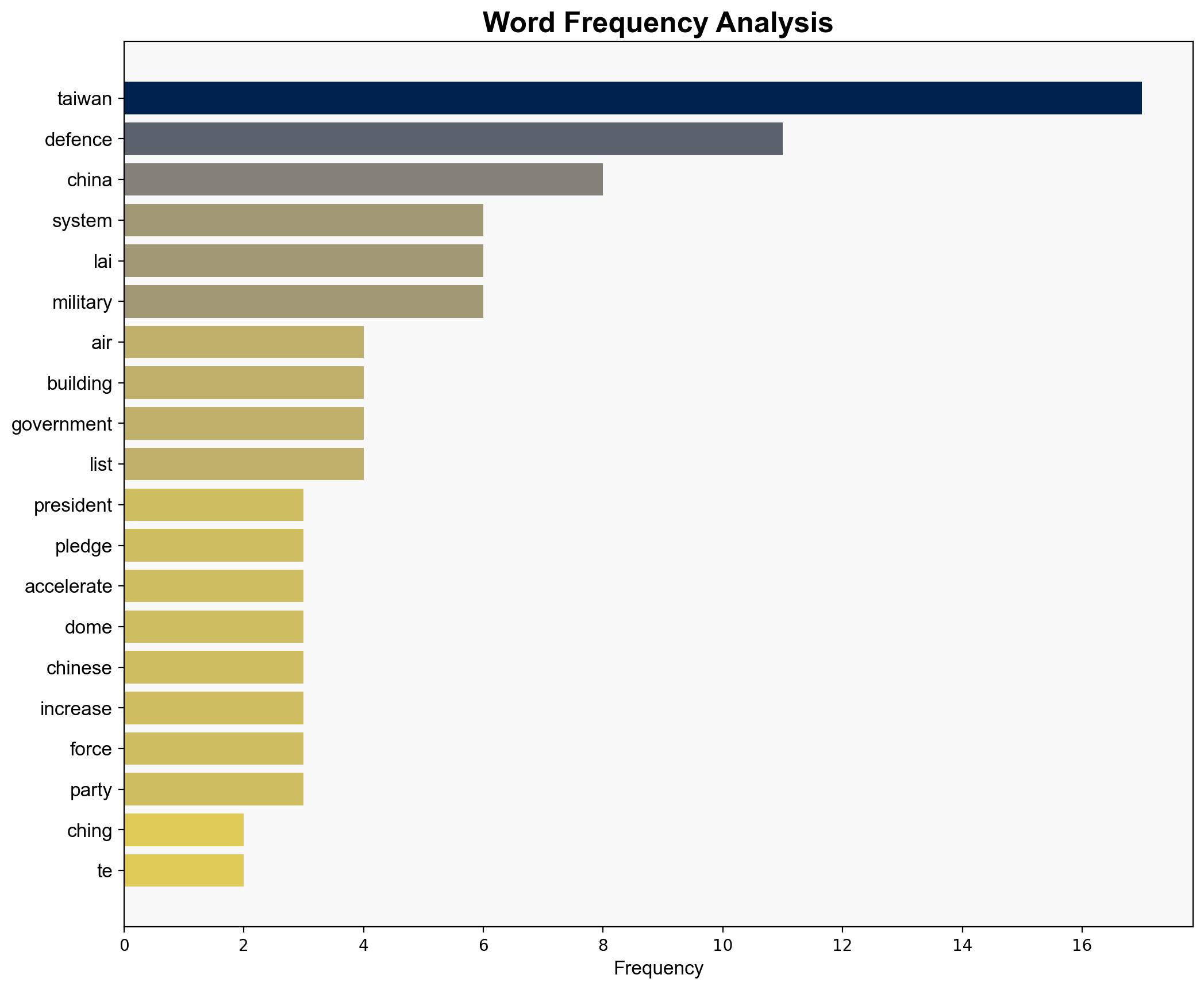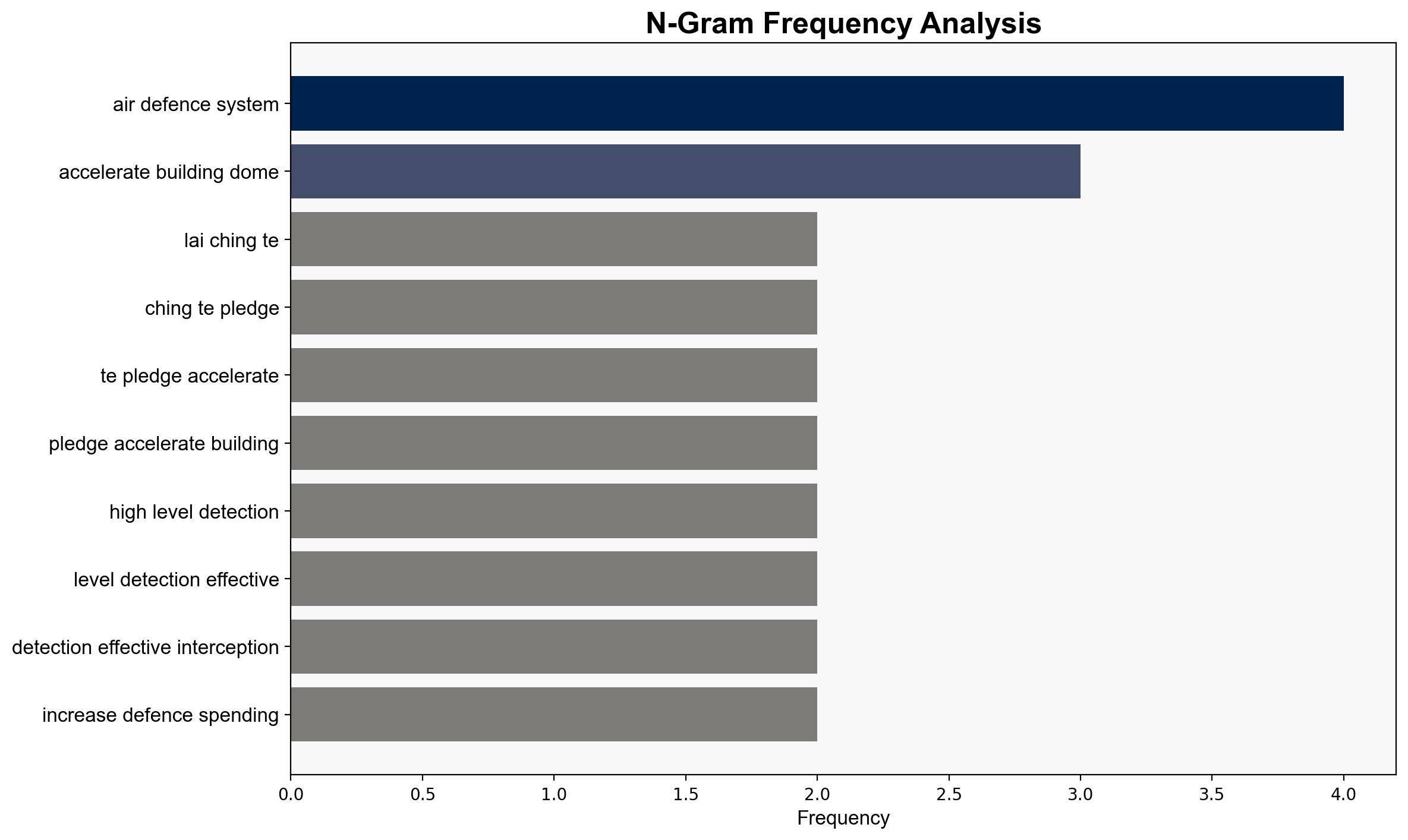Taiwan leader promises robust air defence system amid rising China tensions – Al Jazeera English
Published on: 2025-10-10
Intelligence Report: Taiwan leader promises robust air defence system amid rising China tensions – Al Jazeera English
1. BLUF (Bottom Line Up Front)
Taiwan’s strategic move to enhance its air defense capabilities is a direct response to increased Chinese military activities. The most supported hypothesis is that Taiwan is strengthening its defense to deter potential aggression and maintain regional stability. Confidence level: Moderate. Recommended action: Monitor developments in Taiwan’s defense infrastructure and China’s military maneuvers to assess potential shifts in regional power dynamics.
2. Competing Hypotheses
1. **Deterrence Strategy Hypothesis**: Taiwan’s accelerated development of a robust air defense system is primarily aimed at deterring Chinese aggression and maintaining the status quo in the Taiwan Strait.
2. **Domestic Political Maneuvering Hypothesis**: The announcement is a strategic move by Taiwan’s leadership to bolster domestic support by showcasing a strong defense posture against external threats.
3. Key Assumptions and Red Flags
– **Assumptions**:
– Taiwan’s defense enhancements are assumed to be technologically feasible and timely.
– China’s military activities are perceived as a direct threat to Taiwan’s sovereignty.
– **Red Flags**:
– Lack of detailed information on the technological capabilities and timeline of the proposed defense system.
– Potential overestimation of Taiwan’s ability to rapidly develop and deploy an advanced air defense system.
4. Implications and Strategic Risks
– **Geopolitical Risks**: Escalation of military tensions in the Taiwan Strait could lead to broader regional instability.
– **Economic Risks**: Increased defense spending may strain Taiwan’s economy, potentially impacting other sectors.
– **Cybersecurity Risks**: Enhanced defense systems may become targets for cyber attacks, necessitating robust cybersecurity measures.
5. Recommendations and Outlook
- Monitor Taiwan’s defense procurement and development activities for signs of technological advancements or delays.
- Engage in diplomatic efforts to reduce tensions between Taiwan and China, promoting dialogue and conflict resolution.
- Scenario Projections:
- Best Case: Successful deterrence leads to reduced military tensions and increased regional stability.
- Worst Case: Military escalation results in conflict, disrupting regional trade and security.
- Most Likely: Continued military posturing without direct conflict, maintaining a tense but stable status quo.
6. Key Individuals and Entities
– William Lai Ching-te
– Chinese government
7. Thematic Tags
national security threats, regional focus, military strategy, defense infrastructure




